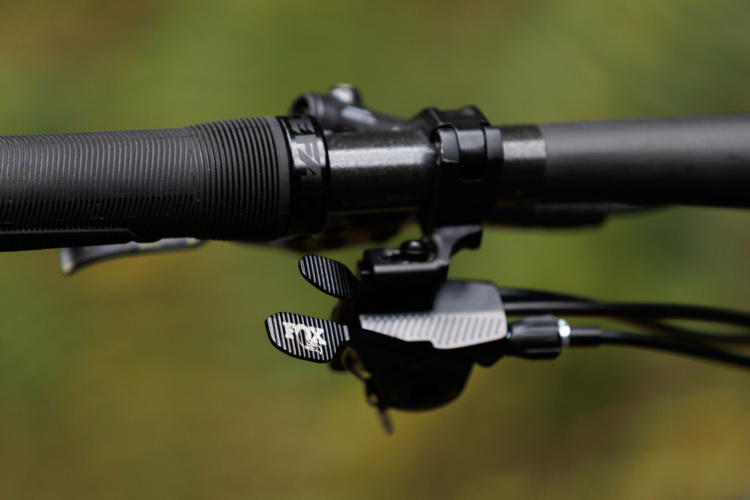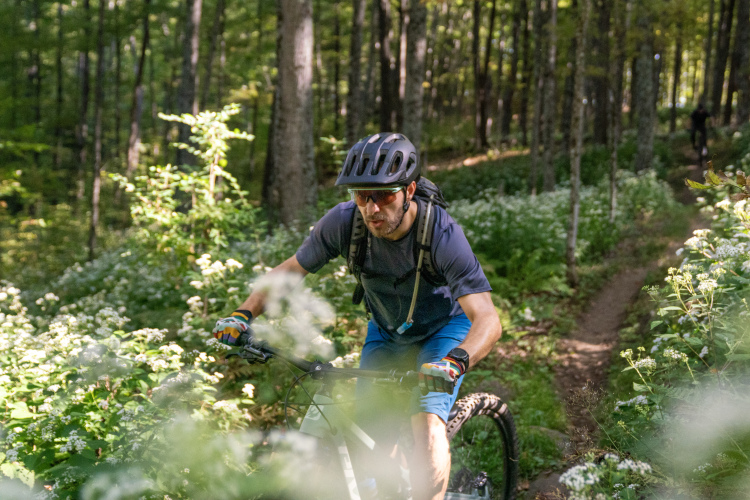The original hardtails with rigid seat posts were arguably less fun to ride than contemporary party bikes, but those simpler steeds had far less to fiddle with at the top of the trail. If your fork had a lockout you flipped it open and pedaled into the ether. Today some bikes have front and rear shock lockouts to click when you drop the seat post, and even funky geometry-adjusting levers. There are a few bikes that almost need a checklist to make sure they’re ready to descend. A friend of mine who started mountain biking this summer asked when it’s best to use the lockout, and we thought it would be helpful to share some answers.
On most shocks and forks the lockout, also referred to as a “climb switch,” restricts the damper’s low-speed compression circuit. When the lever is turned in the firm direction there is less space for oil to pass through the damper. This stiffens up the suspension component for a more efficient pedaling platform. There is typically a bypass function of some sort to allow the fork or shock to absorb larger impacts while locked out, so you won’t be living in a dystopian novel if you forget to open it up before descending.
The most common time to flip a lockout switch to the firm position is before starting an extended climb, then switch to open mode just before coasting back to the base. Cross country racers might firm up their suspension with a handlebar-mounted remote switch for any climb that’s longer than ten seconds, but outside that case a lot of folks won’t bother twisting the lever for any climb under a few minutes in length. Modern shocks and suspension kinematics are typically quite supportive when the pedals are spinning, negating the need to constantly lock things out. I only use the firm setting when climbing smooth grades like a fire road, and otherwise leave it open so I have one less thing to remember. Leaving the switch open on technical climbs will also provide better traction which equates to fewer dabs and less walking.
Some mountain bike frames have more pedal bob than others, leaving the rider pogoing up and down with each turn of the cranks. These bikes almost always climb better with the lockout flipped to the firm side. Additionally, frames with high leverage curves can actuate a shock’s initial stroke with very little input from the rider or trail, despite the static sag measurement, and the lockout will do wonders to keep the back of the bike from wallowing in its travel as you pedal. There are a few other factors that affect the way rear suspension reacts to pedaling forces, which is known as the bike’s anti-squat value, and some bikes will benefit from flipping the lockout switch more often than others.
Shocks themselves have different tunes inside that play their own way with the lockout switch, which increases the “it depends” factor of this lockout question. Since 160mm and longer forks are designed around enduro racing, where the clock only ticks by on the descent, there’s little need for a lockout. Hence, some shocks and a lot of modern long-travel forks don’t have a lockout to think about. Simple.
Suspension setup plays a part in this story as well. Riders who like their suspension nice and soft to make the forest feel like a cozy carpet may need the firm setting more often than folks who stick to a stiffer race-oriented suspension tune.
So the quick and simple answer is to use the shock and/or fork’s lockout on the climb and open it up on the descent. Full stop. While it can be that simple, there is definitely a lot more to the story. Please share your lockout usage tips with fellow readers in the comments below so we can all read dystopian novels instead of riding through them.













7 Comments
Dec 18, 2021
Dec 18, 2021
Dec 17, 2021
Same thing with my fork, though I probably lock it out slightly more often since it's easier to see.
Dec 17, 2021
Dec 18, 2021
Dec 17, 2021
Dec 18, 2021